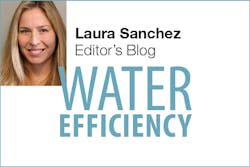The water-energy nexus is often discussed relative to opportunities for efficiency that exist at the interface of energy and water systems. Energy is necessary to treat and distribute water, and water is crucial for producing energy. However, as it turns out, this interdependence can also lead to crisis if one system fails.
This week, as Venezuela’s energy crisis left the nation in darkness, water supplies were also cut off to more than 5.5 million people in Caracas. The New York Times reported that the San Geronimo B substation, which connects eight out of Venezuela’s 10 largest cities to the Guri hydropower plant, went down on March 7. The San Geronimo A backup substation, which distributes power from the smaller Matagua hydropower plant, is in intermittent operation. Without power, water is scarce.
Some residents have chosen to haul dirty water from sewer outlets and contaminated rivers to their homes for flushing toilets and cleaning, while others have bought water from military trucks. Many simply went without.
It’s a public health crisis of epic proportions, and one without an end in sight. Caracas residents explain that the country’s infrastructure has suffered from years of inadequate funding and disrepair. Today the water system is controlled by the military under President Nicolas Maduro’s rule.
Norberto Bausson, who led state utility Hidrocapital in the 1990s, told Bloomberg that part of the issue is that Caracas, which sits 900 meters above sea level, relies on water pumped up from the Tuy system of reservoirs. Without energy, there is no way to move water through the distribution system.
It seems as if the interconnectedness of these systems can also have catastrophic consequences. How does your organization protect its water infrastructure from similar occurrences and ensure reliable water delivery during crises? What lessons can American utilities learn from this grave scenario?
